Observe the different objects around you. They come in various shapes and sizes. Some are the same and some are different. Though we cannot precisely name the shapes of all objects, in mathematics we largely talk about 2D shapes and 3D shapes. Let’s learn more about them!
The word 2D shape refers to a “two-dimensional” shape. A geometrical figure that has two dimensions – length and breadth only is a 2D shape. The two-dimensional shapes have no thickness. The sides are made of straight or curved lines. They can have any number of sides.
The concept of two dimensions can be thought of as a flat surface on which one is able to move anywhere. The flat surface is known as a plane. A 2D shape is something that always lies on a sheet of paper. It has no height, and therefore it does not fall above the piece of paper. 2D shapes are also known as plane shapes or plane figures.
2D shapes have area but no volume.
There are three important terms to outline the characteristics of shapes:
Sides - A line segment that forms a shape on a 2-dimensional figure.
Vertices - A corner of a figure.
Angles - In geometry, an angle can be defined as the figure formed by two lines meeting at a common endpoint.
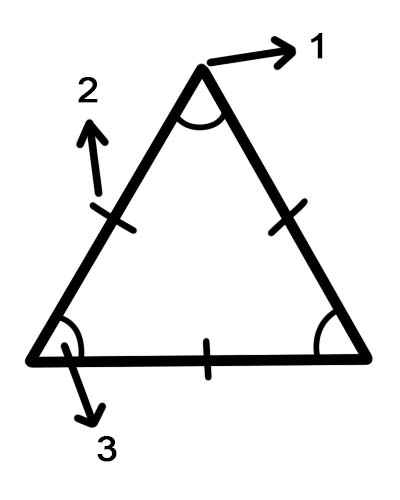
1. vertex
2. sides
3.angles
Let’s discuss different 2D shapes.
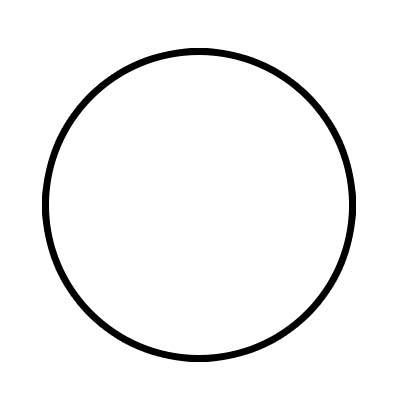
A circle is a round shaped figure that has no corners or edges. We can find the shape of a circle in a car tire, wall clock and a lollipop, around us. The center of a circle is the center point in a circle, from which all the distances to the points on the circle are equal. The distance from the center to any point on the circle is called the radius. If we consider the distance across the circle, passing through the center, that's the diameter. The distance around a circle is called the circumference of the circle.
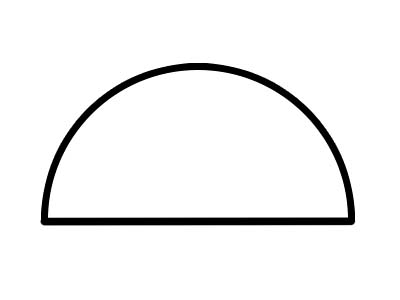
A semicircle is a half circle, formed by cutting a whole circle along a diameter line, as shown above. Any diameter of a circle cuts it into two equal semicircles. The full arc of a semicircle always measures 180°. If a cookie is cut into two halves, then each half is a semicircle.
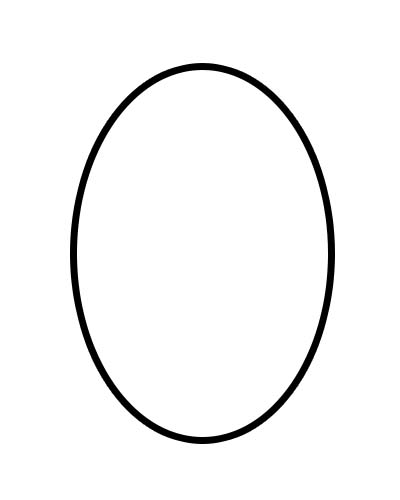
An oval has the form, shape, or outline of an egg. An oval has no straight sides and no corners, but it does have 1 face, which can be traced or seen as a flat shape when looking at it.
A polygon is a plane shape with straight lines. Examples include triangles, quadrilaterals, pentagons, hexagons and so on. A regular polygon has all sides equal and all angles equal. Otherwise, it is an irregular polygon.

1. Regular polygon.
2. Irregular polygon.
Circles and shapes that include curves are not polygons – a polygon, by definition, is made up of straight lines.

In geometry, a triangle is a closed, two-dimensional shape with three straight lines. A triangle is also a polygon.
We can find the shape of a triangle in a flag, a roadside signboard and a sandwich.
A triangle has three sides, three vertices, and three angles.
The sum of the three interior angles of a triangle is always 180°. The sum of the length of two sides of a triangle is always greater than the length of the third side.
To classify triangles according to their angles, we measure each of its interior angles. Triangles can be classified by angles, as:
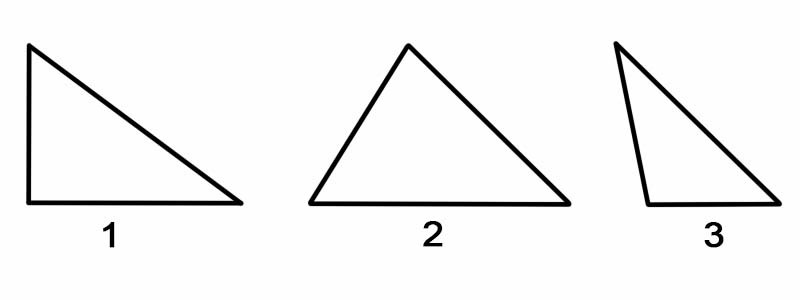
To classify the triangles according to their sides, we measure the length of each of its sides. Triangles can be classified by their sides, as:
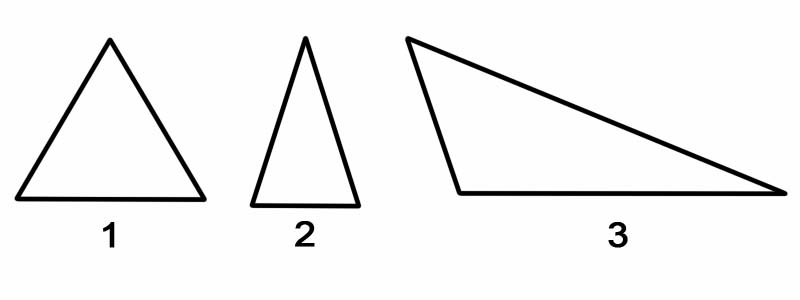
Remember: A triangle can always be split into two right triangles, irrespective of its orientation.
Triangles are polygons with the least number of sides.
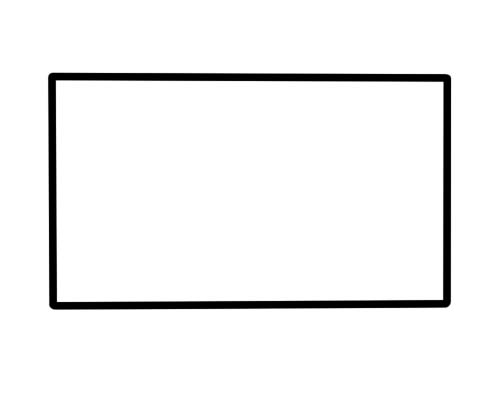
The rectangle is a shape that has 4 sides, 4 vertices, and 4 angles. The opposite sides are parallel and equal in length. All 4 angles measure 90 degrees.
Tables, boxes, books, doors, and paper look like rectangles.
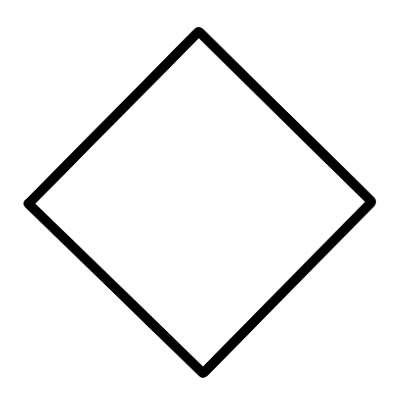
The rhombus is a shape formed by 4 straight lines. Its 4 sides measure the same length but, unlike the rectangle, none of all 4 angles measure 90 degrees. A rhombus looks like a diamond. Opposite sides are parallel and opposite angles are equal. The two diagonals of a rhombus are perpendicular to each other.
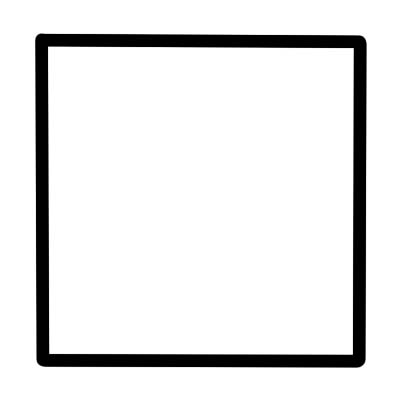
A square is a two-dimensional figure with all four sides equal in length and the two opposite sides are parallel to each other. It is a type of rectangle and rhombus (discussed below). The 4 interior angles of a square are 90º, or in other words, they’re right angles. When all the angles are added together, they add up to 360º. The two diagonals that a square has are equal in length and the point where they cross is the square’s center.
Remember: A square is always a rhombus but a rhombus is NOT always a square. If each angle of a rhombus is 90o, only then it’s a square.
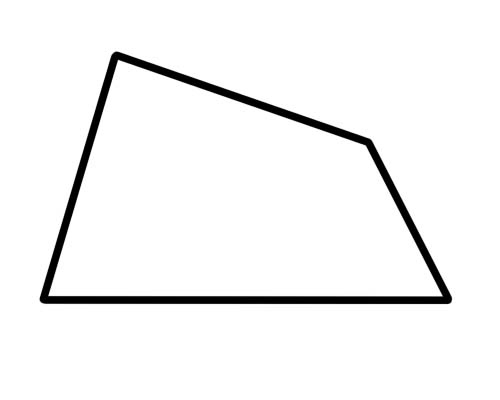
A trapezium is a quadrilateral with only two sides parallel.
That’s it. No sides need to be congruent (or equal) and no angles need to be congruent. Nothing special happens with the diagonals. A special type of trapezium is the ‘isosceles trapezium’ which has opposite sides of the same length and opposite angles of the same measure. The diagonals are also of equal length.
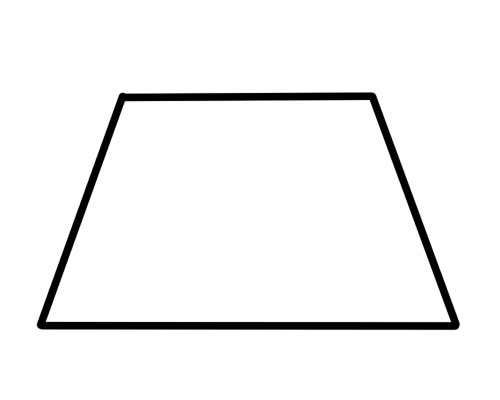
In an isosceles triangle, adjacent angles along the sides (the angles next to each other) are supplementary. This means they add up to 180 degrees.
A trapezium is not a parallelogram because only one pair of opposite sides is parallel.
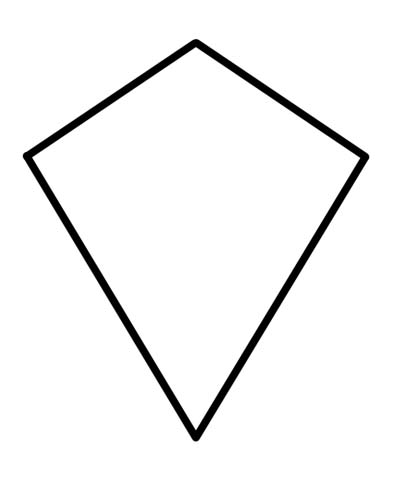
A kite is a quadrilateral with exactly two pairs of the equal consecutive side or in which two disjoint pairs of consecutive sides are congruent (disjoint pairs means that one side can’t be used in both pairs).
You need to know that every Rhombus is a kite, as Rhombus satisfies all the properties of a kite. A kite with opposite sides parallel definitely becomes a rhombus. Thus every Rhombus is a Kite but not vice versa. A kite is not a parallelogram because opposite sides are not parallel to each other.
Quadrilaterals – A four-sided figure is called a quadrilateral
Parallelogram - A parallelogram is a flat shape with opposite sides parallel and equal in length.
Thus, rectangle, square, rhombus, trapezium and kite shapes are quadrilaterals because they have four sides each.
However, only rectangle, square and rhombus are parallelograms.
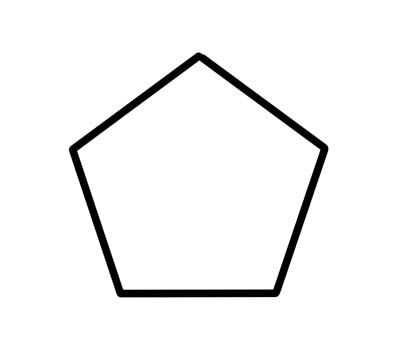
A Pentagon is a 5 sided polygon with five interior angles that add to 540 degrees. Regular pentagons have sides of equal length and each interior angle is of 108 degrees.
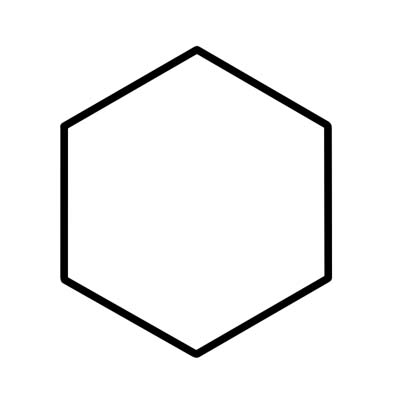
A Hexagon is a 6-sided polygon with six interior angles that add to 720 degrees. Irregular hexagon has sides of different length.
A regular hexagon has sides of equal length and each interior angle is of 120 degrees. A regular hexagon is made up of six equilateral triangles with each central angle equal to 60 degrees.
[insert image: hexagon divided into six triangles and one central angle measuring 60 degrees]
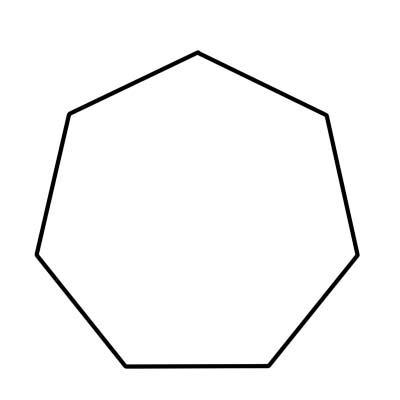
A heptagon is a seven-sided polygon. Along with seven sides, a heptagon has seven vertices and angles. All seven interior angles add to 900 degrees. The measure of each interior angle of a regular heptagon is about 128.57 degrees or approximately 129 degrees.
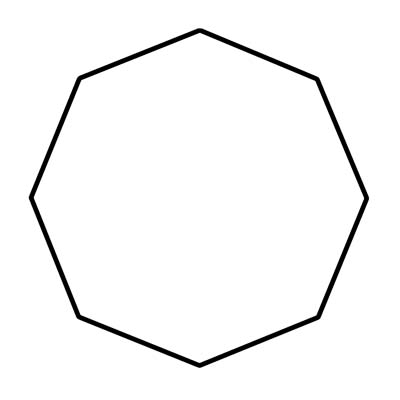
An octagon is a geometrical shape that contains eight sides and eight angles. Octagons must have straight sides that connect; they cannot be curved or disconnected. You will often see octagons in real life in the shape of a stop sign. The measure of each of the eight interior angles of a regular octagon is about 108 degrees. A convex octagon has no angles pointing inwards. More precisely, no internal angles can be more than 180°. When any internal angle is greater than 180° it is concave
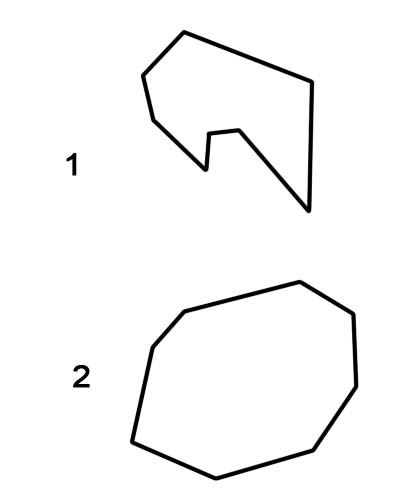
1. Concave octagon
2. Convex octagon
It is important to note that regular octagons are always classified as convex octagons, while irregular octagons can be either concave or convex.
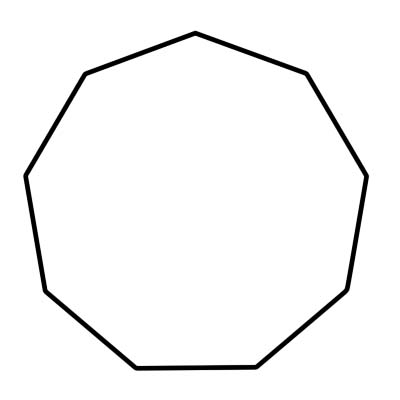
A nonagon is a polygon with 9 sides and 9 interior angles which add to 1260 degrees. A regular nonagon has all sides of the same length and all interior angles are of the same size. The measure of the angle of a regular nonagon is 140 degrees. A nonagon is made up of 9 triangles with the measure of each central angle equal to 40 degrees.
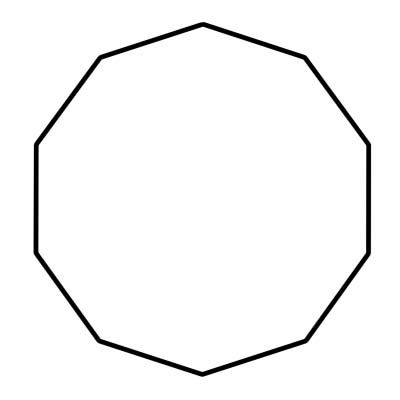
A decagon is a 10-sided polygon. It also has ten vertices - which is where the sides meet - and angles. The sum of the interior angles of a decagon is 1440 degrees. A regular decagon has congruent sides and angles. Each angle measures 144 degrees. A decagon is made up of 10 triangles with the central angle equal to 36 degrees.
The shapes which can be measured in three directions are called three-dimensional shapes or 3D shapes. 3D shapes are also called solid shapes. The three measurements of 3D shapes are - Length, width, and height (or depth or thickness).
3D shapes are different from 2D shapes because they have thickness. Some examples of 3D shapes from our everyday life are:
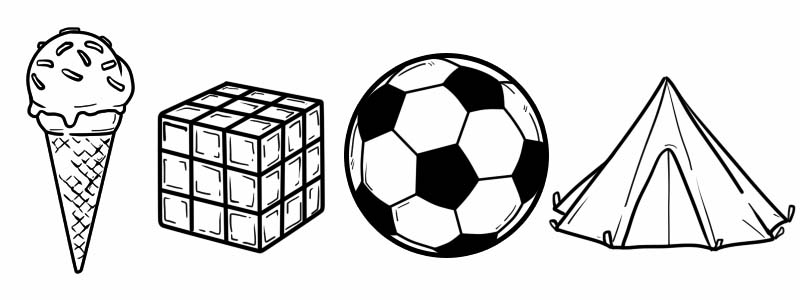
Three-dimensional shapes have vertices, faces and edges.
A prism is a type of three-dimensional (3D) shape with flat sides. It has two ends that are the same shape and size (and look like a 2D shape). It has the same cross-section all along with the shape from end to end; that means if you cut through it you would see the same 2D shape as on either side.

|
3D Shape |
Number of edges |
Number of faces |
Number of vertices |
|
Cube |
12 |
6 |
8 |
|
Cuboid |
12 |
6 |
8 |
|
Cylinder |
2 |
3 |
0 |
|
Triangular prism |
9 |
5 (2 triangles, 3 rectangles) |
6 |
|
Pentagonal prism |
15 |
7 |
10 |
|
Hexagonal prism |
18 |
8 |
12 |
|
Octagonal prism |
24 |
10 |
16 |
A pyramid is also a three-dimensional (3D) shape. It has a polygon base and flat (triangular) sides that join at a common point (called the apex). When the word ‘pyramid’ is mentioned, the first thing that comes to our minds is the famous pyramids of Egypt. The Egyptian pyramids are square-based pyramids, but there are several other types of pyramids, each with a different polygon as its base.
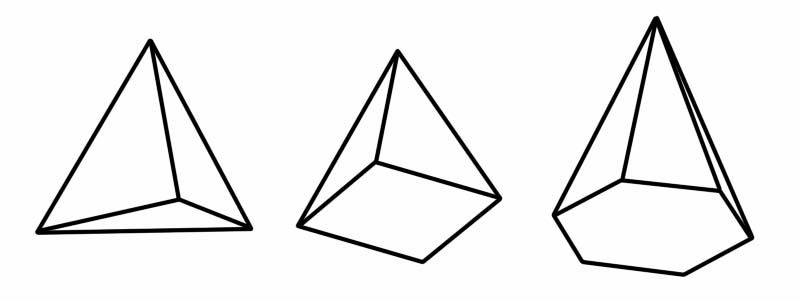
|
Shape |
Number of edges |
Number of faces |
Number of vertices |
|
Tetrahedron |
6 |
4 |
4 |
|
Square pyramid |
8 |
5 |
5 |
|
Hexagonal pyramid |
12 |
7 |
7 |
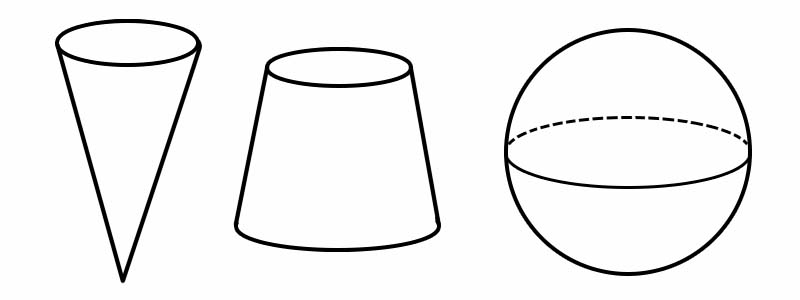
|
Shape |
Number of edges |
Number of faces |
Number of vertices |
|
Cone |
1 |
2 |
1 |
|
Frustum |
2 |
3 |
0 |
|
Sphere |
0 |
1 |
0 |